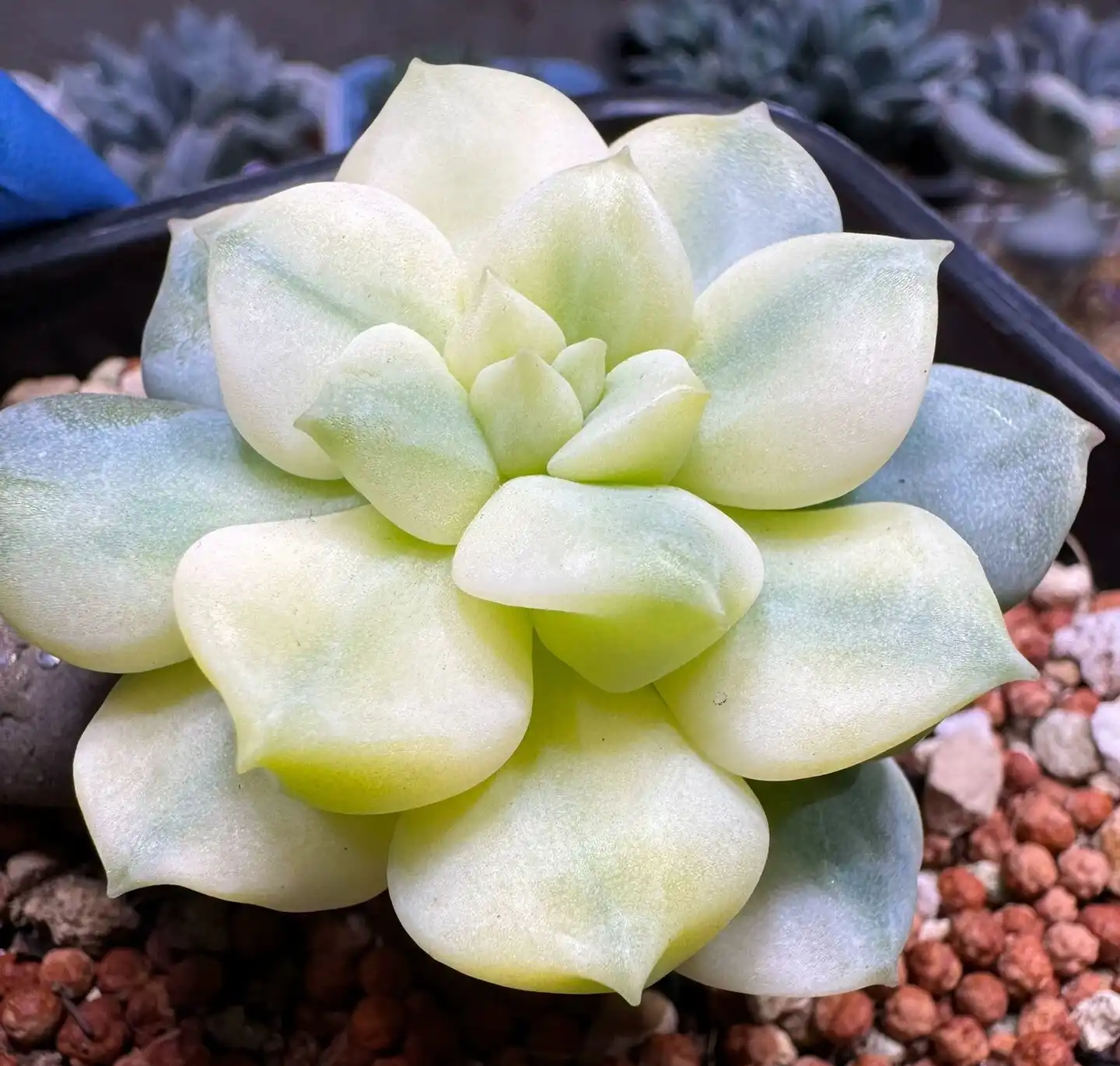Why I’m Obsessed with Variegated Succulents?
“Do you like variegated succulents? It’s hard to say exactly when, but succulent plants have become a favorite among many gardening enthusiasts. You often see photos of small, cute, and vibrantly colored succulents in social media feeds, where enthusiasts have created beautiful miniature succulent gardens. Some who are especially fond of succulents will even dedicate a spot at home for them, even without a balcony. They’re willing to spend money on equipment like air conditioning and grow lights to create the right environment—all just to have a quiet space where they can peacefully appreciate their succulent plants.”
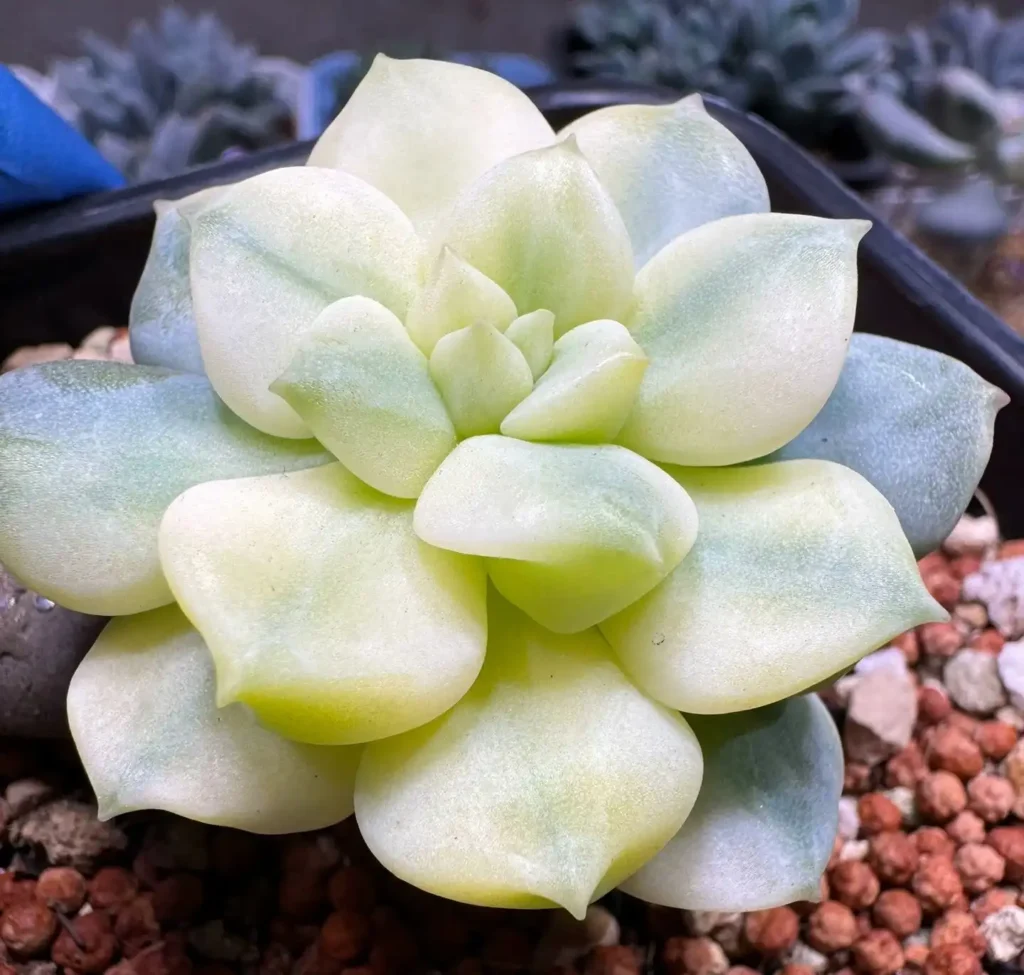
When Did I Start Loving Variegated Succulents?
I started growing succulents in 2020. With so many different succulent varieties, identifying them was challenging at first. Gradually, I learned to spot my favorites among the vast array. Later, I mastered their care techniques and developed my unique cultivation approach. It feels like an invisible force guides us – when you love something, you naturally delve deeper. The more succulents I grew, the more discerning my eye became, and my knowledge expanded.
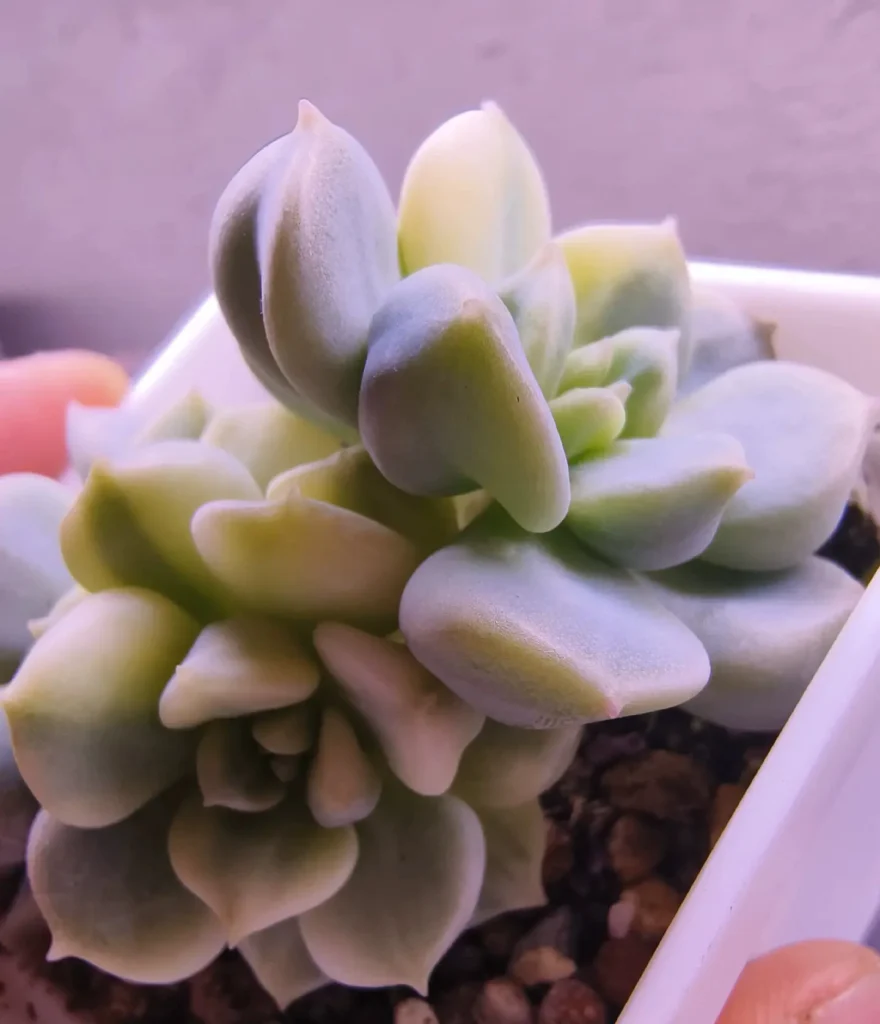
Finally, I encountered the pinnacle of succulent beauty: variegated succulents. It was like stepping into a whole new world – incredibly enlightening, as if brightened by the morning sun. The joy felt as vast as the ocean! From that moment, I wascompletely captivated by variegated succulents and haven’t looked back!
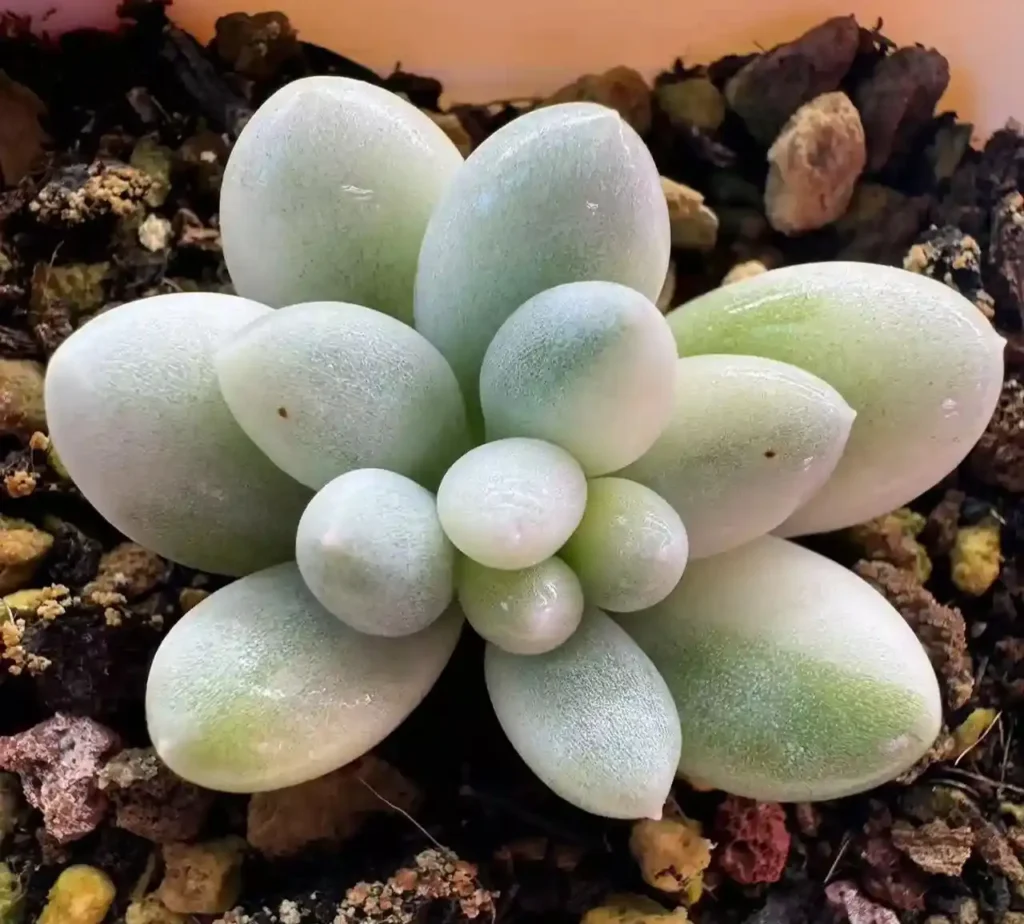
Why Do I Love Variegated Succulents?
The beauty of variegated succulents is almost indescribable. They possess a magical allure – standing before them, the world’s noise and worries fade away. You become utterly immersed in their splendor, just gazing quietly… and gazing.
Their beauty makes your heart race;
Their beauty leaves an unforgettable imprint;
Their beauty drives you to search relentlessly;
Their beauty brings boundless fulfillment once possessed.
Variegated succulents hold this enchanting power, much like encountering a mesmerizing beauty who captivates your soul!
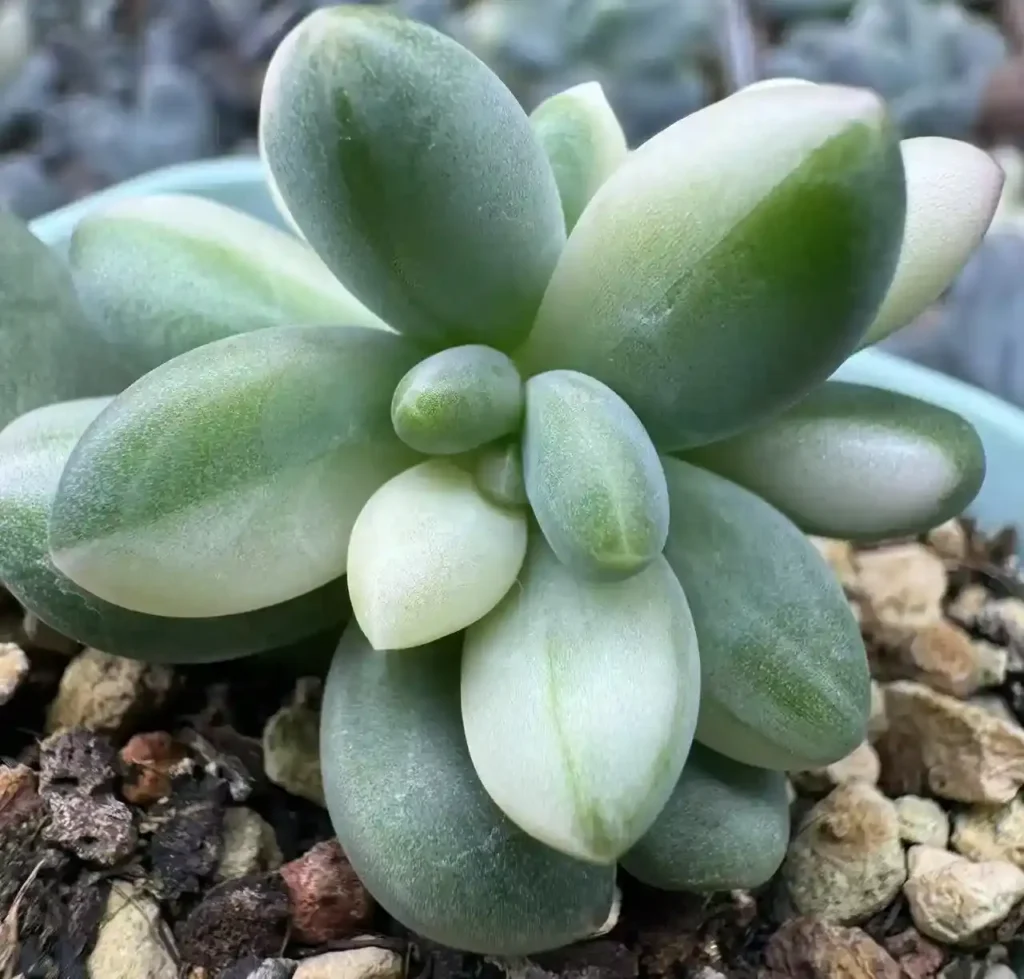
What Are Variegated Succulents?
“Variegated succulents” refer to plants exhibiting a genetic mutation that causes unusual color patterns – patches, stripes, or overall color changes – differing from their normal foliage.
This variegation occurs due to:
- Chlorophyll development issues or
- Blocked pigment production in specific cells
While standard succulents contain pigments like:
✓ Chlorophyll (green)
✓ Carotenoids (yellow/orange)
…the mutated cells fail to produce these normally. This results in lighter zones (white, yellow, or pink) contrasting with regularly pigmented areas, creating vibrant mosaic patterns.
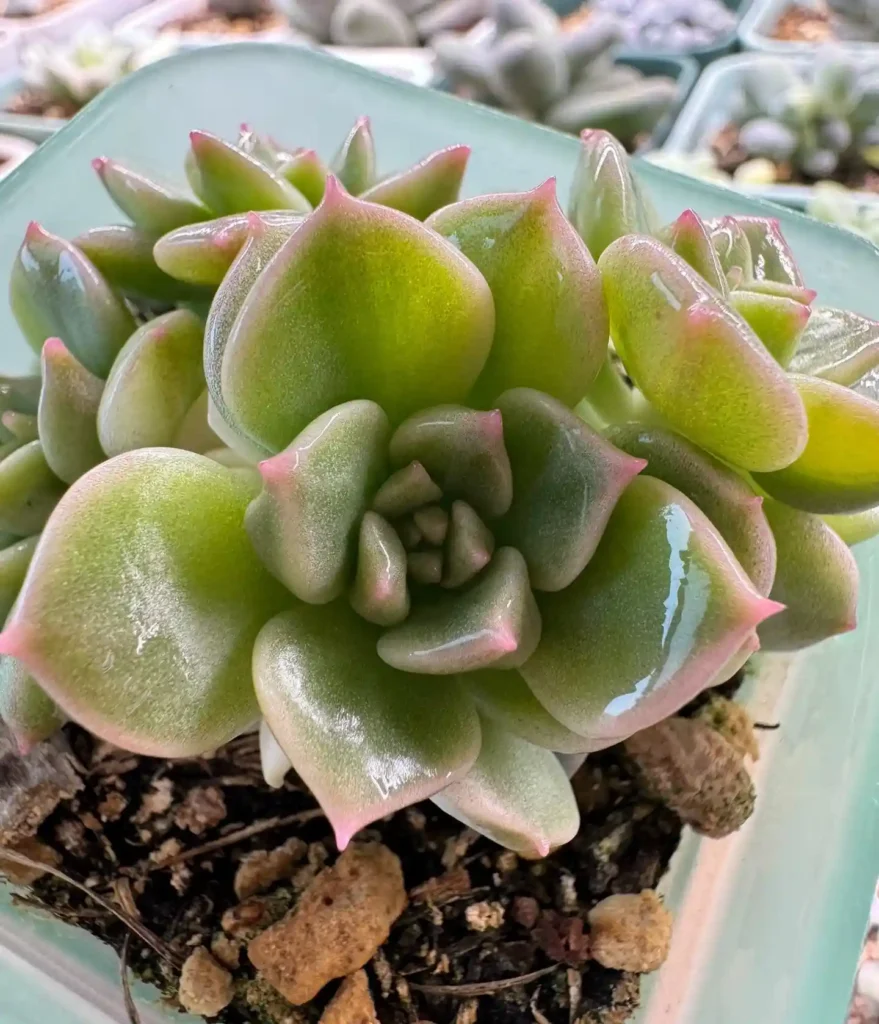
Why Are Variegated Succulents Priced Higher Than Regular Ones?
Variegated succulents command significantly higher prices due to extreme rarity and propagation challenges:
Natural Rarity:
Variegation occurs spontaneously in only ~1 in 10,000–100,000 plants through natural mutation.
Stability Issues:
Even when propagated (via cuttings/offsets), many variegated specimens:
• Revert to normal green forms (“reversion”)
• Produce unstable patterns
• Generate non-variegated pups
Propagation Limitations:
Tissue culture (mass cloning) often dilutes variegation patterns. Seed propagation yields <0.01% variegated offspring.
Collector demand:
Stable varieties with outstanding visual appeal can fetch prices 10 to 100 times higher than standard forms.
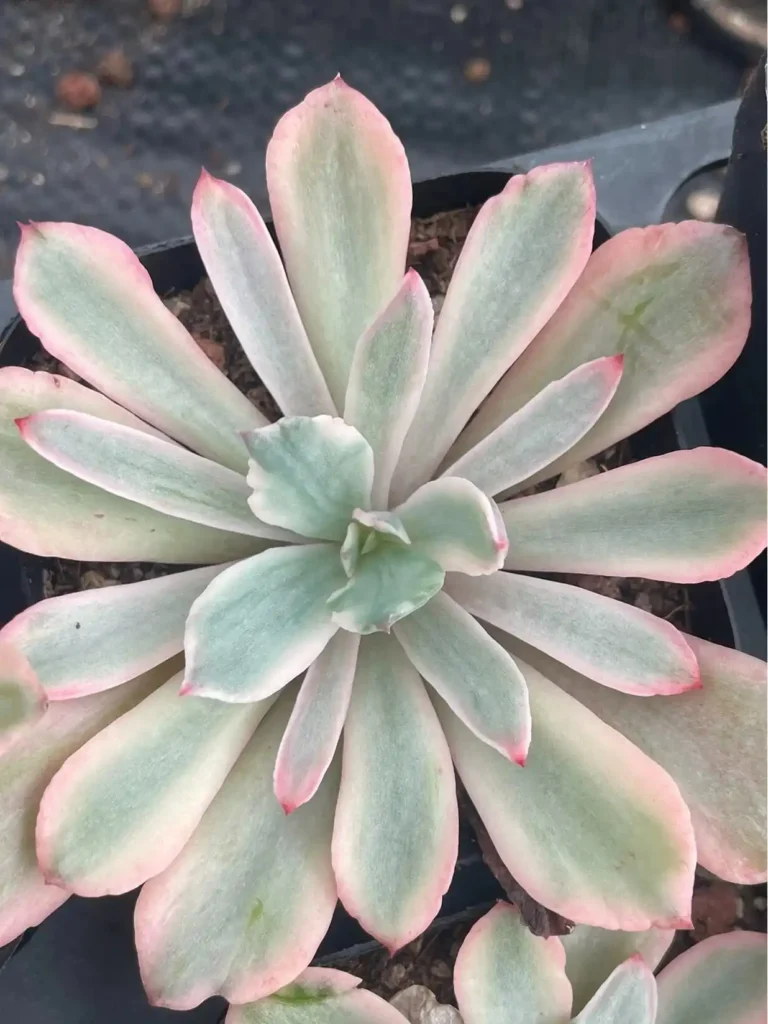
The Evolution of Succulent Plants and Variegation Worldwide
Globally, there are over 10,000 species of succulent plants, classified across approximately 50 botanical families. This diversity offers enthusiasts an extraordinary range of cultivars to explore. Perhaps the most iconic among them is the cactus, which also holds the distinction of being the earliest documented succulent in recorded history.
Scientific Understanding & Cultivation of Variegation (19th–20th Century)
- 1883: A variegated Echeveria cultivar,(Echeveria ‘Decora’), was featured in a French horticultural journal, signifying the formal academic recognition of variegated succulents.
- Early 20th Century: Genetic research confirmed variegation results from a somatic mutation (impairing chlorophyll synthesis), with its characteristic yellow, white, or red patterns demonstrating stable inheritance.
- Post-WWII Commercialization: Dedicated succulent clubs emerged in Europe and North America, accelerating the selective breeding of variegated varieties. Landmark legislation like the US Cactus Poaching Prevention Act (1973) helped curb the plundering of wild specimens.
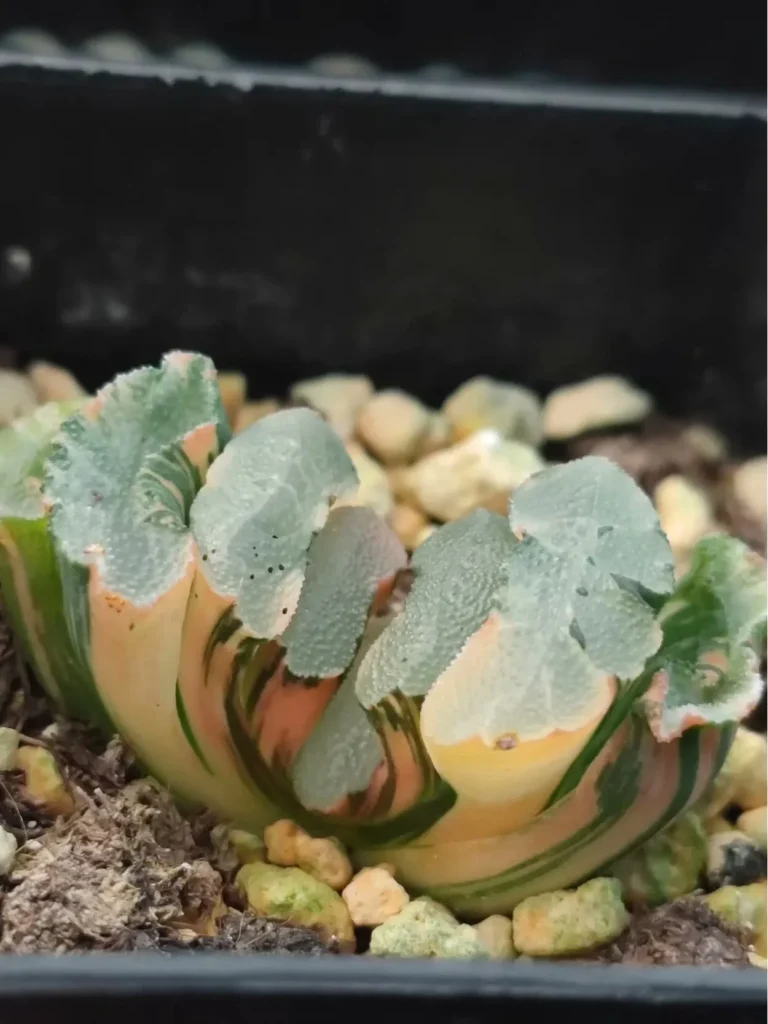
The Evolution of Succulent Plants and Variegation in China
1. Early Records and Folk Cultivation (10th–19th Century)
• Song Dynasty (960–1279):
Fan Chengda’s The Record of Guihai Region and Its Natural Products describes (Longgu mu, “dragon bone wood”) as “jade-green in color, resembling dried bones” – the earliest known written record of a succulent plant in China.
• Ming Dynasty (1368–1644):
- Compendium of Materia Medica (Li Shizhen) documents the medicinal use of Euphorbia helioscopia (spurge family).
- Eight Treatises on Living with Ease (Gao Lian) notes the ornamental value of succulents but makes no mention of variegation.
• Qing Dynasty (1644–1912):
Emperor Qianlong’s poem Ode to the Green Jade Plate praises the cactus as a “tribute gift to the imperial court,” reflecting its introduction into palace gardens.
2. Modern Introduction & Recognition of Variegation (20th Century–Present)
• Early 20th Century:
Succulents beyond cacti (e.g., Crassulaceae, Aizoaceae) entered China via coastal cities like Xiamen and Guangzhou, initially cultivated only among elite circles.
• Delayed Awareness of Variegation:
- Pre-2000s: No records of variegated cultivars existed. Plants were primarily grown for medicine or ornamentation (e.g., Crassula tecta in Yunnan).
- 21st Century: With internet access, Japanese variegated varieties (e.g., Haworthia truncata f. variegata) entered China. Rapid development began post-2015.
• Contemporary Growth:
Succulent associations emerged in Beijing, Shanghai, and beyond. Tissue culture enabled mass production of cultivars like ‘Purple Pearl Variegated’ (Echeveria ‘Pearl of Nürnberg’ f. variegata), though naturally variegated specimens remain rare.
The Future Development Direction of Variegated Succulents
As consumers’ living standards rise, so do their demands for indoor décor. Succulents, as popular indoor ornamental plants, have become highly sought-after. By 2025, China’s succulent plant market is projected to reach RMB 14 billion. Within this substantial market, varietal innovation and diversification are key to future growth. With their rarity and distinctiveness, variegated succulents are poised to hold a unique position.
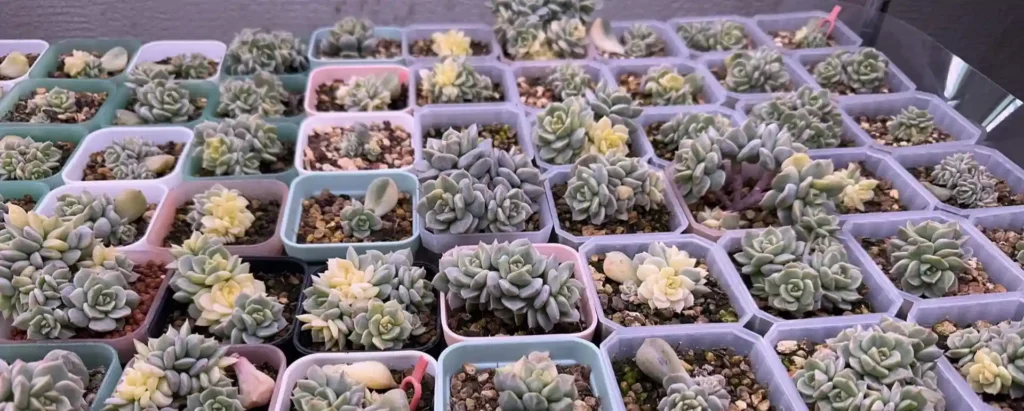
The Future is Here: Variegated Succulents Continue to Brighten My Indoor Garden
The journey ahead is long, and I’ll keep delving deeper into the world of variegated succulents. Whether mastering more scientific care techniques or cultivating rare varieties, I’ll gladly keep investing my time and passion—planting both patience and curiosity.
Maybe the next tiny sprout will unfold vibrant new hues; perhaps another experiment will bloom into an unforgettable story. As long as that inner sunshine at dawn remains within me, I’ll continue this journey. Together, we’ll let these kaleidoscopic beauties fill every corner of our little green havens—and inspire fellow plant lovers everywhere.
